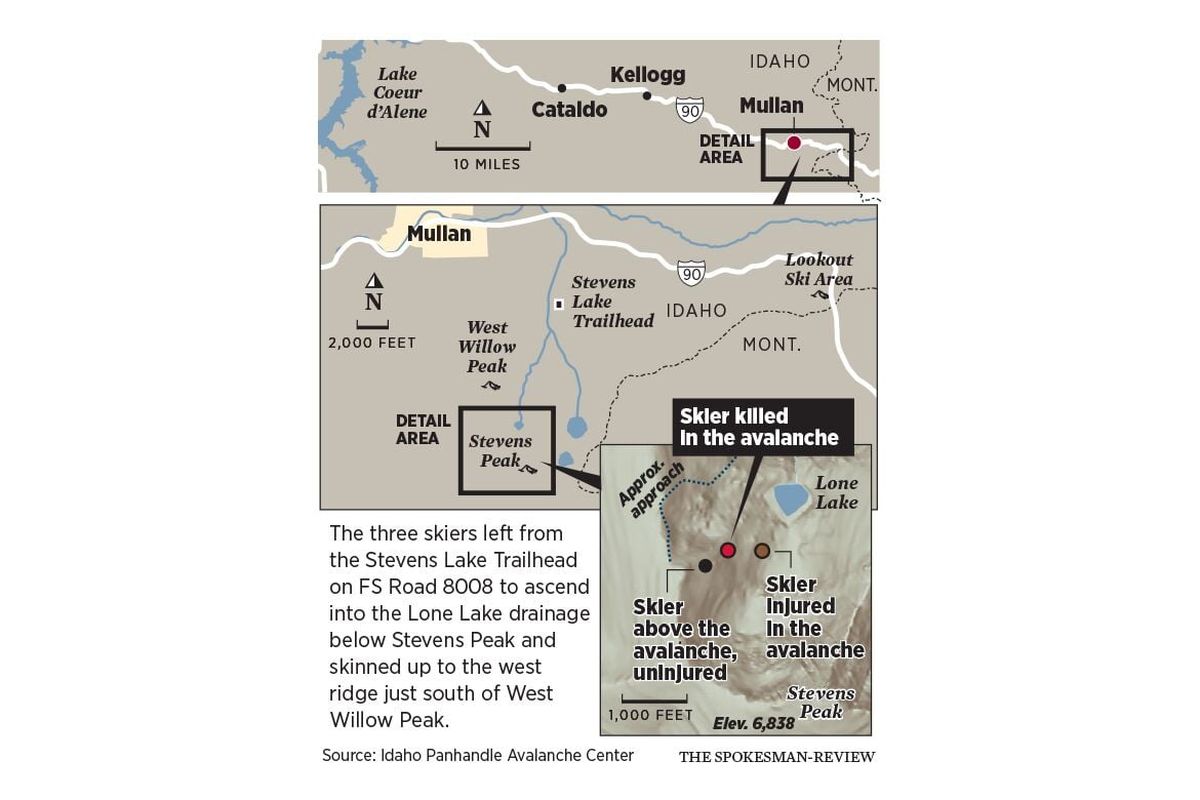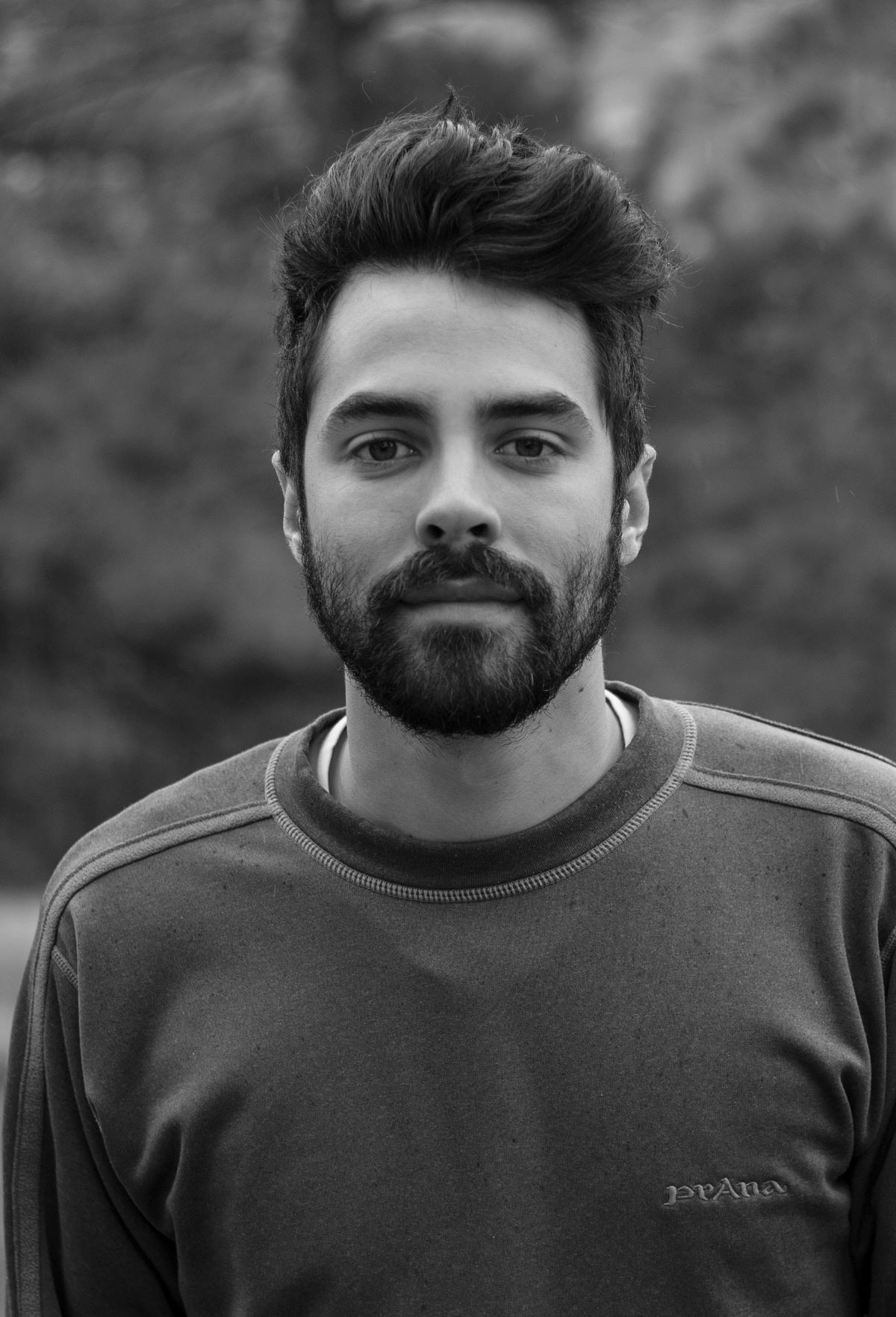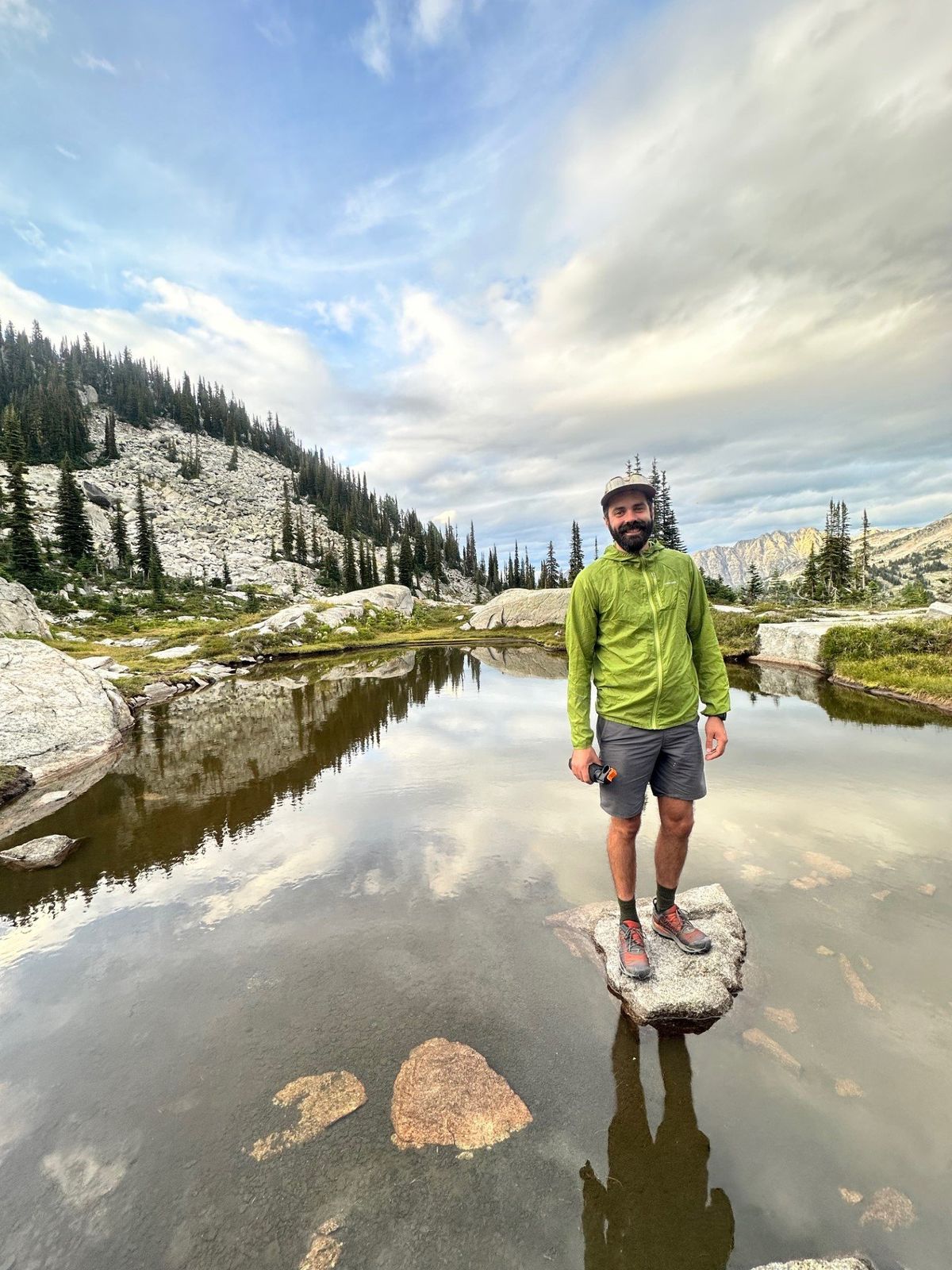Report offers more detail on avalanche that killed skier in North Idaho
Corey Zalewski, who died after an avalanche occurred Jan. 11 near Mullan, Idaho, is the second avalanche fatality in the U.S. this winter and the first in North Idaho since February 2021. (Courtesy of Landon Crecelius)
The plans took shape on a Wednesday, over a Zoom call.
Landon Crecelius, David Sittser and Corey Zalewski gathered virtually to work out a ski trip for the following morning.
By 8:15 a.m. the next day, Jan. 11, the three experienced backcountry skiers from Spokane had left a trailhead south of Mullan, Idaho, and started trekking into a drainage below Stevens Peak. They’d checked avalanche conditions on the way in. An avalanche warning from the Idaho Panhandle Avalanche Center for high elevations had expired that morning, but the center was still advising travelers that conditions were dangerous.
The group had already agreed that they would ski conservatively, sticking to slopes they knew were safe. They had the proper rescue gear – beacons, airbags, shovels and probes – and they knew how to assess risk. As they skinned up to a ridge, they made sure their beacons worked and watched the snow, seeing no red flags.
Shortly after noon, they skied their first run safely. They climbed back up to the ridge and moved on to their second run, a little farther south. Crecelius told The Spokesman-Review on Monday that the spot was “trickier than we anticipated,” with steeper slopes on each side, but that the group identified a line they thought could be skied safely.
Crecelius skied down first, stopping at a safe spot to radio back to the other two that it was all clear for them to head down.
Zalewski went next. As he skied down, a small, localized avalanche started, then propagated. The crack in the snow spread into terrain the skiers had intentionally avoided, and the avalanche got bigger.
Crecelius was buried at the bottom of the slide. Zalewski was buried farther uphill. Both had deployed their airbags. Sittser watched from above as the events unfolded, and once the snow settled, he began searching.
Zalewski’s airbag was visible. Sittser found him pinned to a tree. A report from the Idaho Panhandle Avalanche Center said Zalewski showed “no signs of life.” His body was recovered by helicopter the next day.
Zalewski’s death marked the second avalanche fatality of the winter in the United States, and the first in North Idaho since February 2021. It came in an area popular with backcountry skiers and snowmobilers, and just a few days after heavy snows and high winds increased avalanche danger.
But the investigation by the Idaho Panhandle Avalanche Center, released on Monday, said the three skiers did many things right, and the events leading up to the avalanche underscore “the fine margins of safety we as backcountry users navigate regularly, whether wittingly or not.”
Sittser and Crecelius said Monday they hadn’t seen anything concerning in the snow up to that point, and that they were committed to being cautious.
“We just found ourselves in a spot that we didn’t expect to see the snow move,” Crecelius said. “And it did, in a really terrible way.”
Fast friends
Zalewski, who was 32, grew up in Federal Way, Washington, the youngest of four siblings. Brooke Schlange, his sister, said he loved sports as a child and played them year-round.
“Soccer, baseball, tennis,” Schlange said. “If he was in an off-season, he was out making his own little teams in the neighborhood with my other brother.”
Schlange said he had a great sense of humor and was a “total goofball.” She also said he was thoughtful and contemplative, and an “excellent student.”
After he graduated from Todd Beamer High School, Zalewski moved to Spokane in 2009 to attend Whitworth University, which his brother also attended. Zalewski graduated from Whitworth in 2014 with a master’s in business administration.
It’s also where he met Crecelius, the university’s director of student success and equity. The pair became friends and outdoor adventure partners, finding they shared passions for skiing and mountain biking.
Over time, Crecelius said, Zalewski essentially became a part of his family. He joined them for weekly dinners, holidays, family bike rides and helped with household projects.
Zalewski left Spokane for a time, but he moved back two years ago. That’s when Sittser, another Whitworth graduate, got to know him. Crecelius introduced them, and soon, Zalewski became one of Sittser’s treasured friends.
“He loved to see beauty in the world,” Sittser said. “He was just a remarkably grounded person.”
The three found they made for a good outdoor team.
They all cared about staying fit. They all cared about recreating safely and did the trainings necessary to ensure they had the skills to save themselves if something went wrong. And their attitudes aligned – they celebrated each other rather than pushing each other beyond their limits.
In the week before the avalanche, Zalewski and Crecelius skied together several times. One day with the family at 49 Degrees North. A trip before church that Sunday. Another before work that Wednesday, hours before the Zoom call with Sittser to plan the next day’s skiing.
“We were just skiing and living really life to the fullest,” Crecelius said.
Investigation
The start to the 2023-24 winter had been paltry. Ski areas opened late, then closed because of warm temperatures and rain. Snowpack in the Silver Valley was just above 50% of normal by the end of December.
Things changed in January. IPAC’s avalanche investigation said a weather station at Silver Mountain, a ski resort in Kellogg, recorded 29.7 inches of new snow between Jan. 3 and Jan. 11.
The three days before the slide also brought strong winds, which can move snow around and create higher avalanche risk because of the formation of wind slabs.
IPAC, a nonprofit largely staffed by U.S. Forest Service employees, publishes full forecasts for North Idaho and parts of Western Montana twice a week, on Tuesdays and Fridays. Its forecast on Jan. 9 warned that avalanche danger was high at elevations between 6,500 feet and 7,500 feet, and considerable at elevations between 5,500 feet and 6,500 feet.
The warning expired the morning of Jan. 11. Ben Bernall, an IPAC forecaster, said the alert was allowed to expire because forecasters expected the snow would settle and become more stable, and that the likelihood of an avalanche had “dropped a little.”
That didn’t mean no risk. In a post on its website, IPAC told backcountry travelers that conditions were still dangerous, and that forecasters “strongly advised” avoiding steep terrain.
Crecelius, Sittser and Zalewski knew that, having read the report while on the road, and they had identified multiple plans depending on the conditions.
“We were committed to an approach that included caution,” Sittser said.
They started at the Stevens Lake Winter Trailhead, where they ran into an IPAC forecaster who was headed out to test the snow. The test, which occurred about a mile north of the avalanche, found a “generally stable snowpack,” and that the interface between the new and old snow appeared to be stable.
The three skiers hiked up the Lone Lake drainage and skinned up a ridge south of West Willow Peak, where they started both of their runs for the day. The second run where the avalanche struck was past Lone Lake, between West Willow and Stevens peaks.
As part of the investigation, IPAC staff returned to the site of the slide on Jan. 14, where they took pictures, examined the snow and analyzed the terrain.
The report said the slide happened at an elevation of 6,160 feet on a slope with an angle between 35 and 39 degrees, and islands of trees below. It was 400 feet wide and ran about 1,000 feet, with a vertical drop of 510 feet.
The slide appeared to be “triggered from a point between protruding rocks where the snow might have been shallower and weaker than expected,” the report said.
The report credits the three skiers for the precautions they took, and notes that “there were few, if any, readily apparent signs of instability.”
‘A lot of grief’
After digging himself out, Crecelius called for help using a Garmin inReach, shortly after 2:15 p.m. He’d lost his skis and poles, and his arm was broken. Sittser went down to him.
The Shoshone County Sheriff’s Office was alerted after Crecelius called for help. Search and rescue teams from Shoshone County and Kootenai County responded, as did the Silver Mountain Ski Patrol and members of the Northern Rockies Avalanche Canine team.
Weather scuttled hopes of a helicopter rescue, and Sittser and Crecelius were advised to start walking out.
They had made it halfway to the trailhead, post-holing through deep snow, when rescuers met them, according to the report. A tracked ATV carried them for the last mile.
The next day, a Spokane County Search and Rescue air unit recovered Zalewski’s body.
News of the avalanche traveled fast, though scant with detail. Both Sittser and Crecelius sent friends and family lengthy emails telling them what happened, copies of which were shared with The Spokesman-Review.
In addition to detailing the narrative, they shared their love for Zalewski.
“He was adventurous, funny, weird (in the best of ways), thoughtful, courageous,” Sittser wrote. “We’re wading through a lot of grief.”
“He spent as much time as he could in the mountains along alpine trails riding his mountain bike, skiing, camping, and being with friends amidst creation,” Crecelius wrote. “Our hearts are broken over the loss of this delightful human and the hole he leaves in our life is profound.”
Schlange, Zalewski’s sister, said Monday that the family was grateful for Sittser and Crecelius, and that her brother was with them and doing something he loved in his final hours.
“I’ve always felt like that’s Corey’s church, is being outdoors,” she said. “That’s where he experienced and encountered God in a very real way.”
Editor’s note: This story was changed on Jan. 23 to reflect that Zalewski graduated from Whitworth University with a master’s in business administration in 2014.


